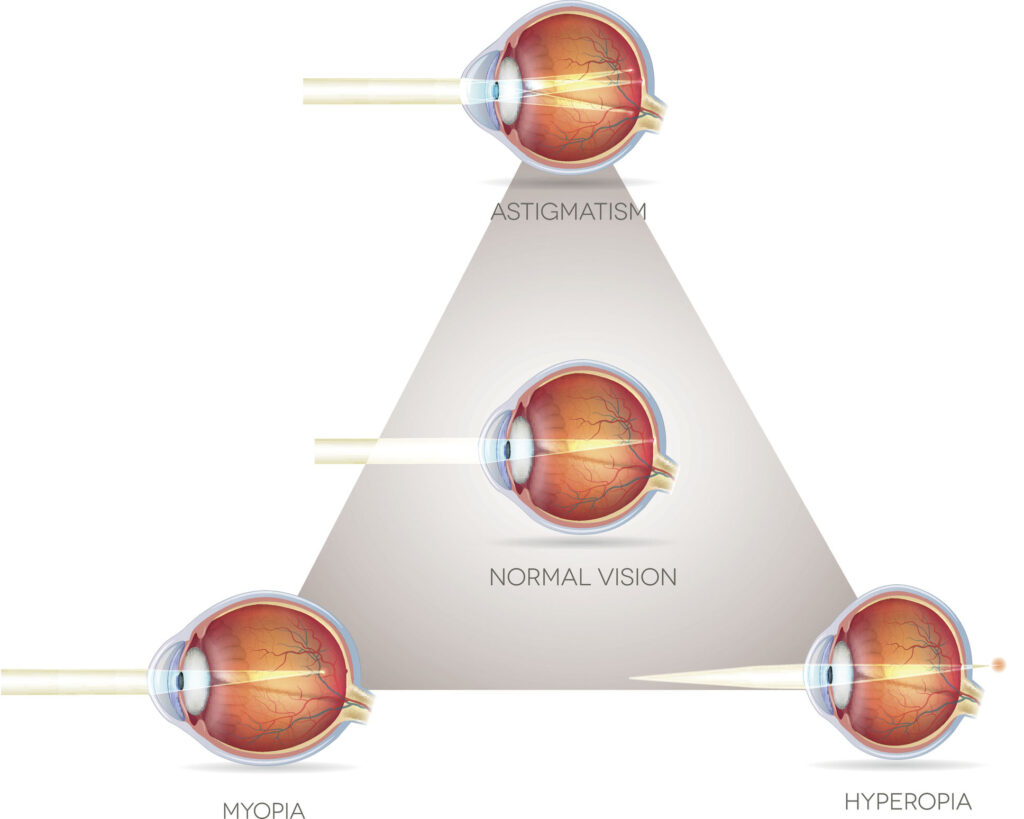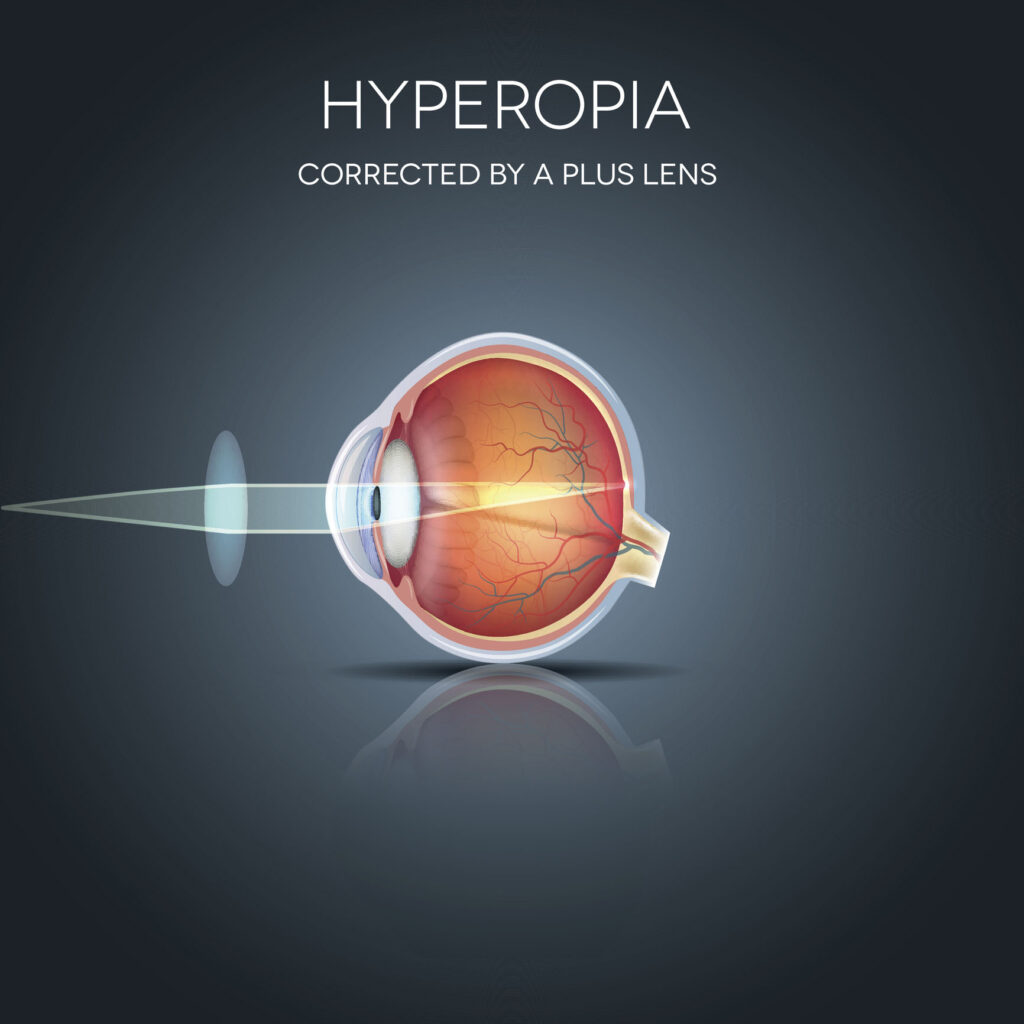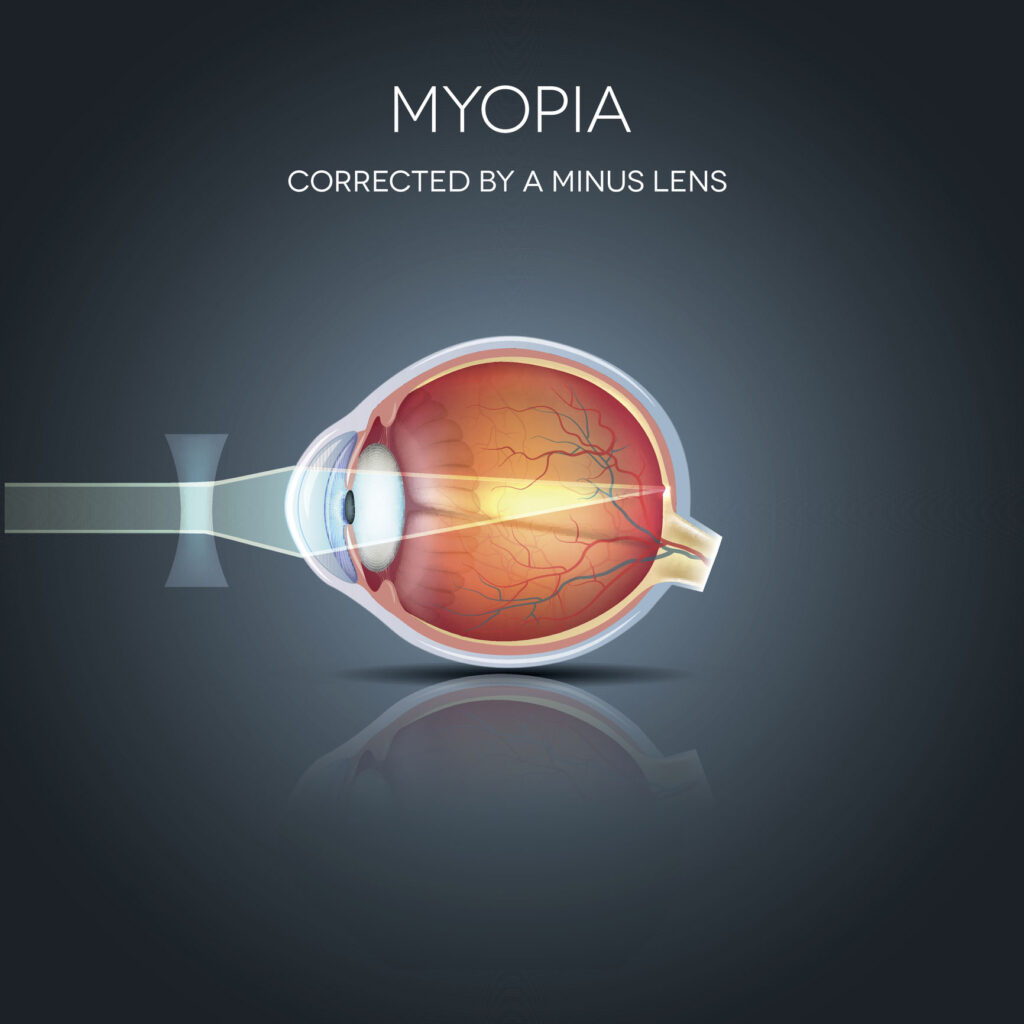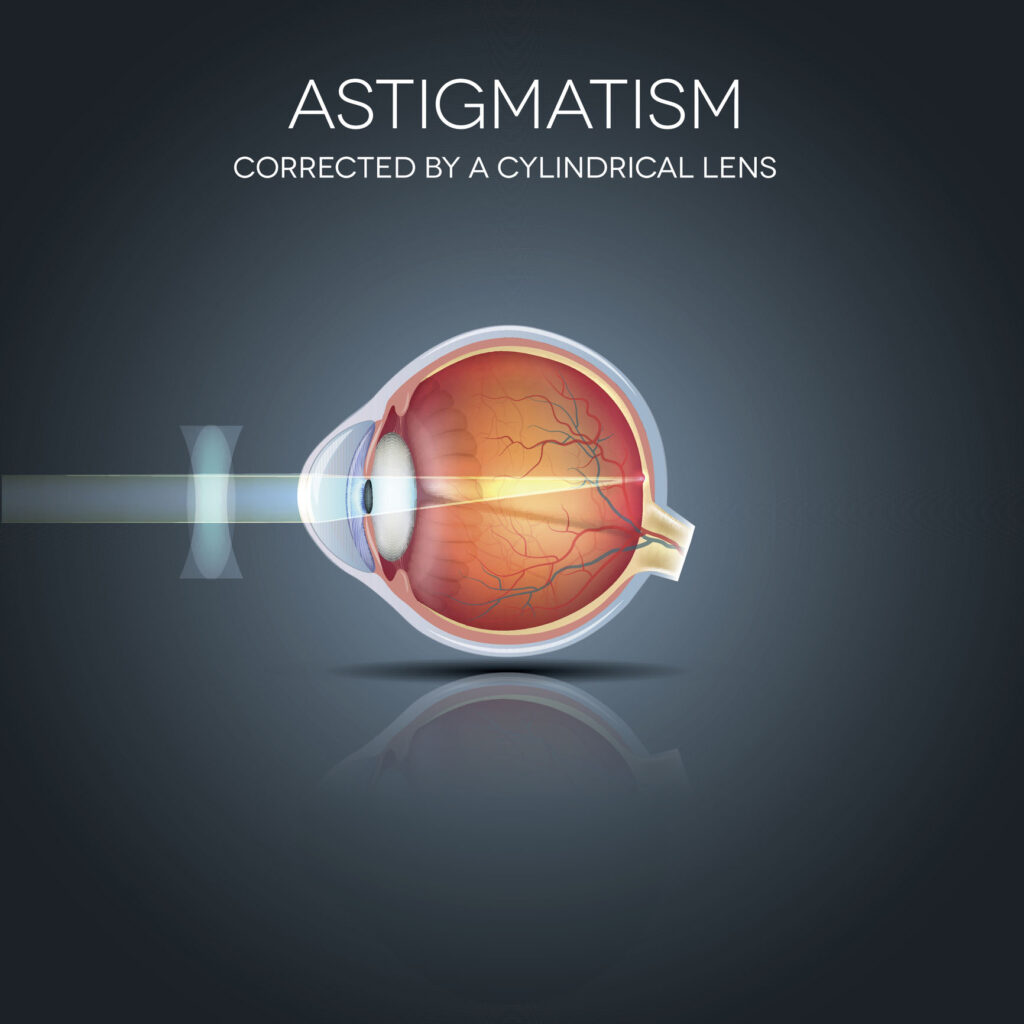Visual impairment
Refraction
The word refraction (lat. re = back, frangere = to break) refers in the ophthalmology the term refraction refers to the optical power of correction required by the eye to see an unaccommodated object at infinity as a sharp image. The light rays of this object hit the eye in parallel and are focused through the lens of the eye as an image on the retina in a normal-sighted eye. The object is imaged on the expanse of the retina.
In order for the image to be optimally displayed on the retina, the light rays must not be obstructed on their way through the components of the eye. All of these components must be transparent. Focusing in the eye is done with the lens and cornea. As the object gets closer, the focus through the lens changes and the image on the retina remains sharp. This adaptation of the lens shape is called accommodation. If the image on the retina is out of focus, it is a refractive error.
A distinction must be made between objective refraction, which can be determined by a measuring device and is determined by the refractive properties of the eyeball, and subjective refraction, which requires information from the person being examined about the perceived image sharpness and takes into account the influence of other variables on perception.
You may become aware of presbyopia when you start holding books and newspapers at arm’s length so you can read them. A simple eye exam can confirm presbyopia. You can correct the condition with glasses or contact lenses. You might also consider surgery.
Farsightedness (Hyperopia)
In long-sightedness, the length of the eye is too short in relation to its refractive power. The perceived object is imaged behind the retina. Thanks to the accommodating effect of the lens, the object can be imaged on the retina, but this is associated with increased eye fatigue. Children with farsightedness often experience headaches during close-up activities or at the end of the day. In young adults, farsightedness can manifest itself in difficulty seeing close up. Farsightedness can be corrected with glasses, contact lenses and, under certain conditions, with the help of laser surgery.
Nearsightedness (Myopia)
In short-sighted people, the length of the eye is too long in relation to the distance. A perceived object is imaged in front of the retina. The short-sighted eye sees in the distance in a blurred way, but the lens of the eye is in a resting state, i.e. there are no additional signs of fatigue, and it can even be beneficial in the onset of presbyopia. Short-sightedness can be corrected by glasses, contact lenses and surgical procedures, including laser surgery. Depending on the severity of the myopia, different types of surgical procedures can currently be used.
Astigmatism (Astigmatism)
If the curvature of the cornea or the lens is unequal, we speak of astigmatism. Normally the curvature of the cornea is the same in both axes. The shape of the cornea is more like a part of a ball, such as a football. In astigmatism, the cornea can be compared to a rugby ball. There are two different axes of curvature. When looking at a watch, for example, with astigmatism some of the numbers on the dial are only perceived as blurred. This visual defect can occur together with short-sightedness or hyperopia. Astigmatism can be corrected with the help of glasses, contact lenses, surgery and laser surgery.
Presbyopia (Presbyopia)
This is the deteriorating ability to accommodate, which can start after the age of 40 in most people. The lens, due to the ageing process, loses its flexibility, causing the near point to become more and more distant. The first signs of presbyopia are slightly blurred vision when reading. This is especially noticeable when looking far and near in rapid succession. To illustrate the problem, you can bring a picture 40cm in front of your nose. The person, in order to focus, brings the image further back, so that One says: “The arm (e.g. when reading) is gradually becoming too short”. Presbyopia can be corrected with reading glasses. The options are: half-lenses, double-focusing and multifocal lenses. The advantage of multifocal lenses is clear vision at all distances. Contact lenses can be fitted if certain conditions are met. Presbyopia can also be corrected during cataract surgery, using special lenses.



